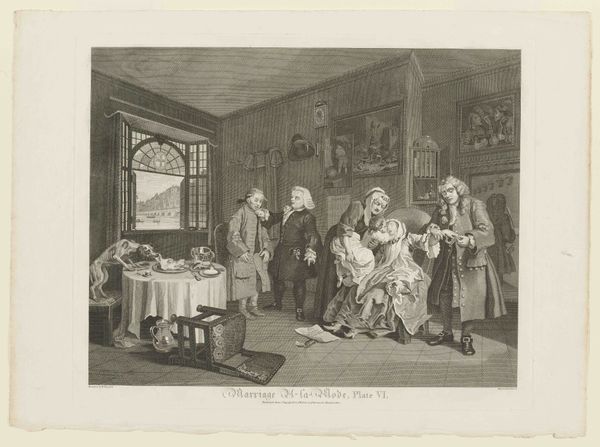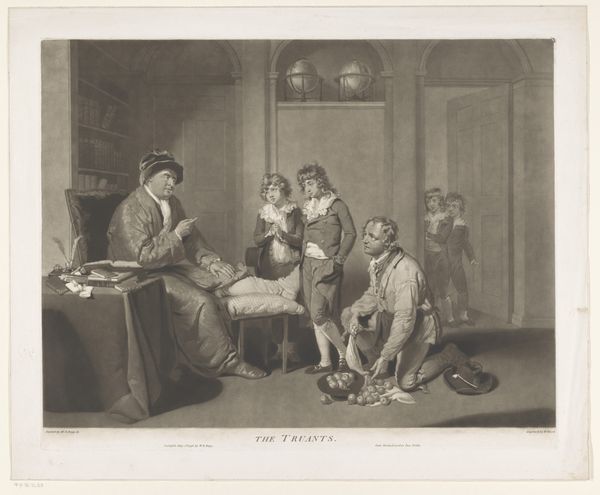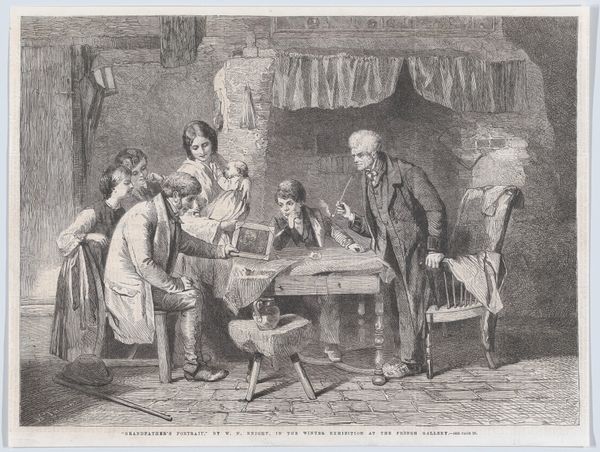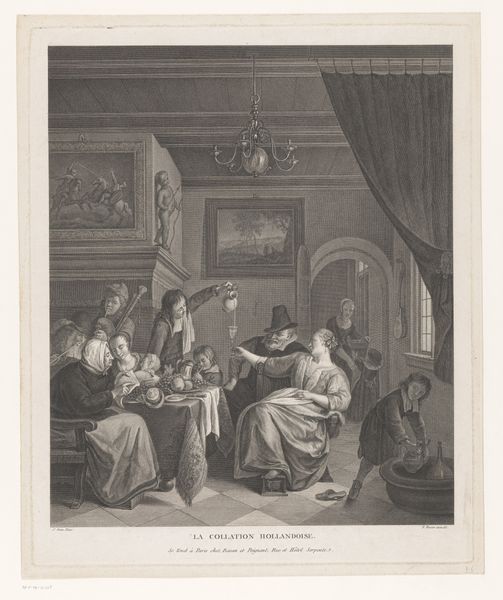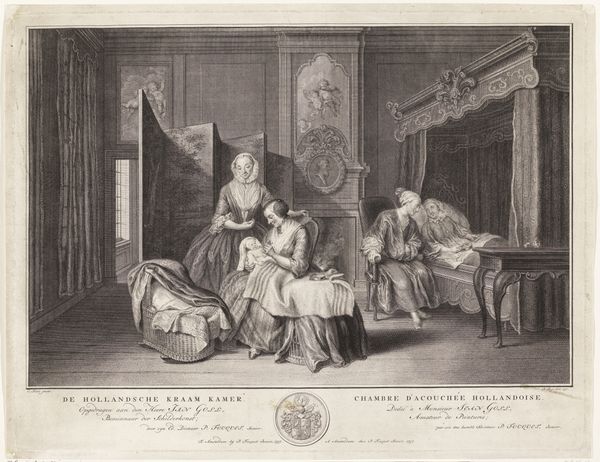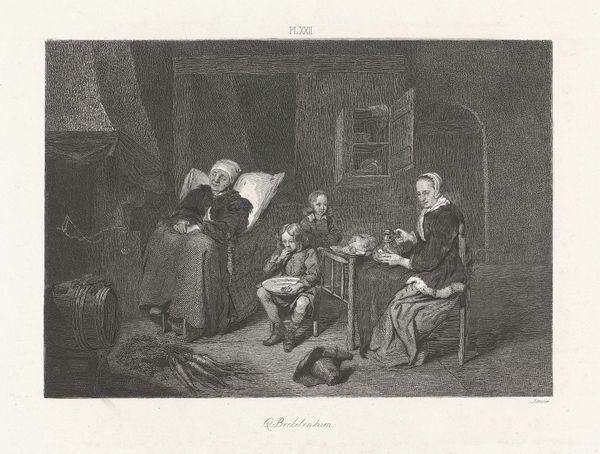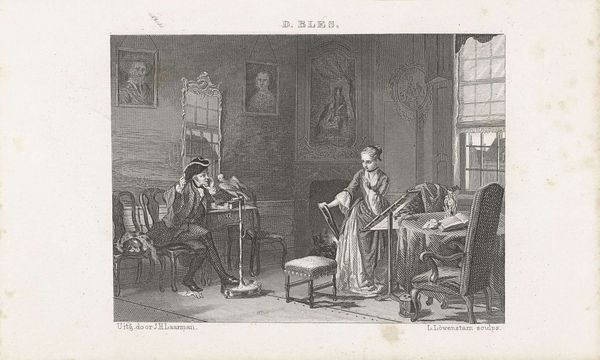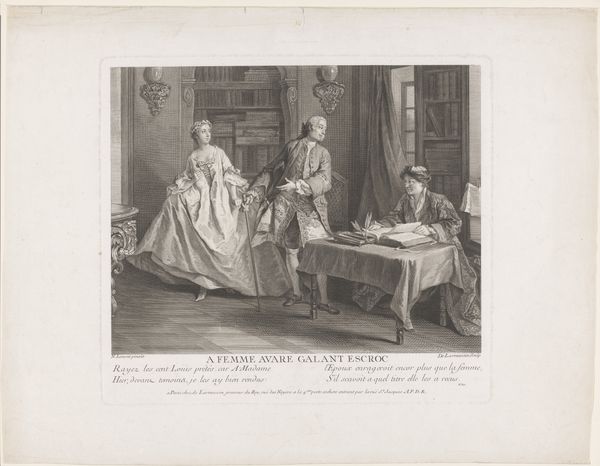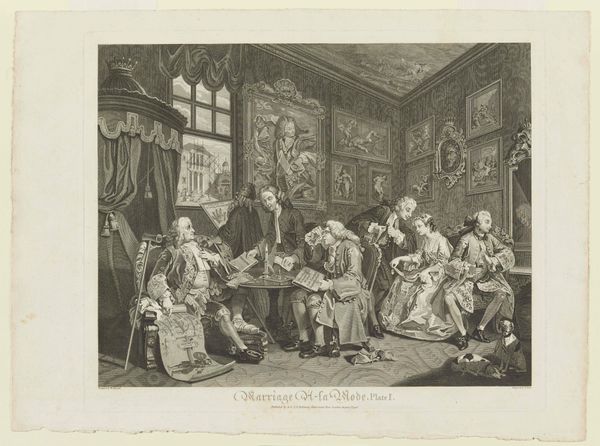
engraving
#
vintage
#
old engraving style
#
charcoal drawing
#
romanticism
#
19th century
#
genre-painting
#
history-painting
#
academic-art
#
engraving
Dimensions: height 215 mm, width 258 mm
Copyright: Rijks Museum: Open Domain
Editor: Here we have Jan Frederik Christiaan Reckleben's 1845 engraving, "Return of the Prodigal Son." The scene feels so staged, theatrical almost, but the subject matter is powerful. I'm curious, what historical context brings this piece into sharper focus? Curator: Good eye noting the theatricality! Consider this work within the 19th century context, a period increasingly defined by bourgeois values, anxieties about social mobility, and the increasing dominance of the nuclear family as a cultural ideal. The prodigal son's return speaks to both the potential for redemption *and* the threat of familial disruption. Editor: Disruption? I thought it was all about forgiveness. Curator: It *is* about forgiveness, certainly. But consider how genre paintings like this were displayed, where they were displayed and by whom. These works were not just pious illustrations. They reinforced dominant social hierarchies and promoted morality through narratives accessible to the burgeoning middle class. This scene visualizes a correct moral structure but might the placement of his hat – removed – his downcast posture and the women’s clothing speak to their positions within a household. Can art not be useful in establishing those boundaries, too? Editor: So it's not *just* a religious scene; it's about reinforcing social order within the home through relatable drama? I hadn’t thought about the intended audience that way. Curator: Precisely. The print allows for widespread dissemination of that social order. The art becomes didactic. Didacticism of this scene makes art useful as a moral tool. Editor: Fascinating! It really highlights how art operates within these webs of societal values and power structures. I’ll look at these 19th century works with fresh eyes going forward. Curator: Absolutely. Reflecting on this, I am struck again how familiar biblical stories have, and continue to be, such potent carriers for broader cultural ideas and anxieties.
Comments
No comments
Be the first to comment and join the conversation on the ultimate creative platform.
